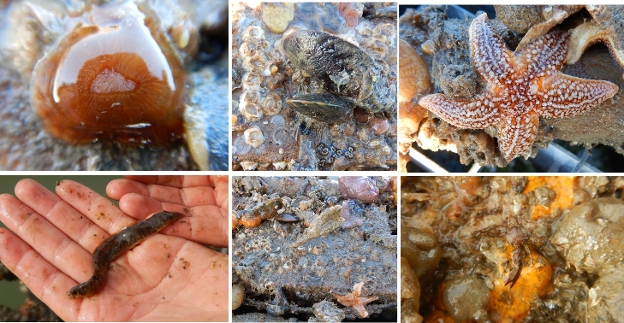Cookies
Van Hall Larenstein treats its customers' information with the utmost care and will never make this information available to third parties. Read more about us Privacy and Cookie Policy
“With an alternative material to concrete, we can combine coastal safety and biodiversity. And this is badly needed, because the biodiversity of our seas and oceans is declining rapidly”, says project leader Jorien Rippen.
In the recently launched RAAK public project ECODAMI (Ecologisch Optimale en Duurzame Alternatieve materialen voor Mariene Infrastructuur [Ecologically Optimal and Sustainable Alternative materials for Marine Infrastructures]), researchers from VHL University of Applied Sciences (VHL), together with other knowledge institutes, public parties and companies, will develop materials that can replace concrete in marine infrastructures and have an optimal ecological effect. Concrete is used for, among other things, dyke cladding, harbour quays and breakwaters, but concrete production is infamous for its very high CO₂ emissions.
Ecologists and engineers are joining forces in this project. They are searching for sustainable alternatives to concrete that consist of as many natural materials as possible. This increases the chance for fauna such as oysters and mussels to attach themselves. The technical partners in the consortium are taking the materials’ conventional requirements into account during the research. The ecological success, specifically the degree to which certain target species affix themselves to the materials, is then tested by ecologists in the lab and in the field. This method of collaboration should result in sustainable and ecologically optimal building materials that can be used directly in marine infrastructure, such as dyke cladding, harbour quays and breakwaters. The new material can also be used for artificial reefs that promote species diversity.
Lies van Nieuwerburgh (senior marine ecologist, Rijkswaterstaat North Netherlands): “To achieve a robust food web and increased biodiversity underwater, restoring habitats and increasing connectivity (land and water, fresh and salt) is essential. The new material can contribute to the improvement of underwater nature at the PAGW trajectory of Lauwersmeerdijk-Vierhuizergat (one of the test sites of the ECODAMI project).”
In the ECODAMI project, VHL University of Applied Sciences is collaborating with knowledge institutes such as Eindhoven University of Technology, University of Groningen, HZ University of Applied Sciences and HAN University of Applied Sciences. Moreover, public stakeholders include Rijkswaterstaat Noord-Nederland, Waterschap Noorderzijlvest and Saba Public Entity, as well as the companies NETICS, Witteveen+Bos, Bioclear Earth, Acroniq and the Leeuwarden concrete plant.
The two-year project is partly funded by SIA (part of the Netherlands Organisation for Scientific Research).
